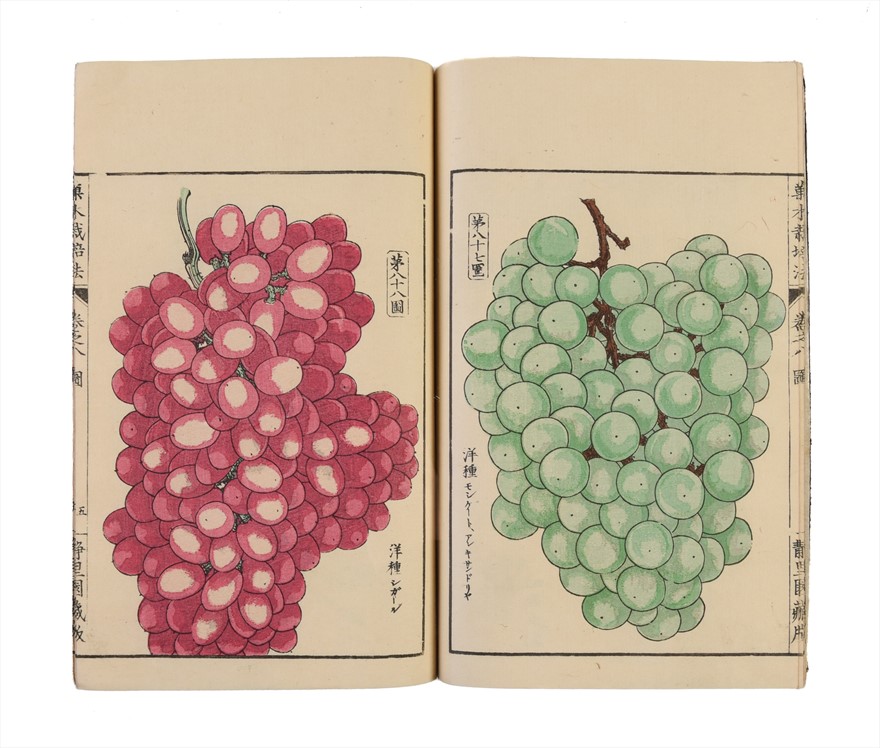Kaboku saibaihou [Fruit Cultivation]
FUJII Toru.; TANAKA Yoshio.; KATO Chikusai. Illustrator (1876].)
£1800.00 [First Edition]
Introducing Western fruits to Japan
First edition. 8 vols. 84 colour woodblock plates in vol. 8, colour woodblock printed title pages to vols. 1 and 5. Fukurotoji binding, original boards with printed title-slips, measuring 115 x 225 mm, small stains to last 4ff. of vol. 7, minor worming and bumping to corners of vol. 8, but overall a very good set. Tokyo, Seirien, Meiji 9 [i.e.
One of the first books on the cultivation of Western fruits in Japan.
The present title is written by naturalists Yoshio Tanaka (1838-1916) and Toru Fujii (dates unknown), who are credited with introducing Western pomology to Japan (see Ichiro Kajirua, Nihon kudamono shinenpyo, 2008). Together they developed a categorisation system which consisted of four groups: jinkarui pome fruits, kakukarui stone fruits, karahaterui shell fruits (i.e. nuts) and shokarui berries. Alongside these categories, the set details theories and methods of propagation, grafting, transplanting, as well as tree cultivation and the use of manure. Examples of fruits and the technical aspects of the book are beautifully illustrated in the eighth volume by Chikusai Kato (1818-?), who was known for his studies of nature.
The publication of this title coincides with the growth of pomology and agricultural studies in Japan. In the following year (1877), the Koishikawa Botanical Garden became part of Tokyo Imperial University, allowing for increased botanical research. Tanaka, one of the authors, was the founder of the Komaba School of Agriculture, which later became Tokyo University's Faculty of Agriculture. He was a key driving force in the agricultural industry, having served as the director general of the Agricultural Affairs Bureau in the Ministry of Agriculture and Commence.
It is particularly interesting to consider the present title in the context of Japan's luxury fruit market. At the very high end, fruits are treated in the same vein as craft objects, with factors such as colour, flavour and shape affecting their price. Perfectly grown square watermelons can reach tens of thousands of dollars, while a box of six strawberries can retail for over $150 during their peak season. Such decadent fruits continue to form an important part of Japanese gift-giving culture.
Stock Code: 252461












